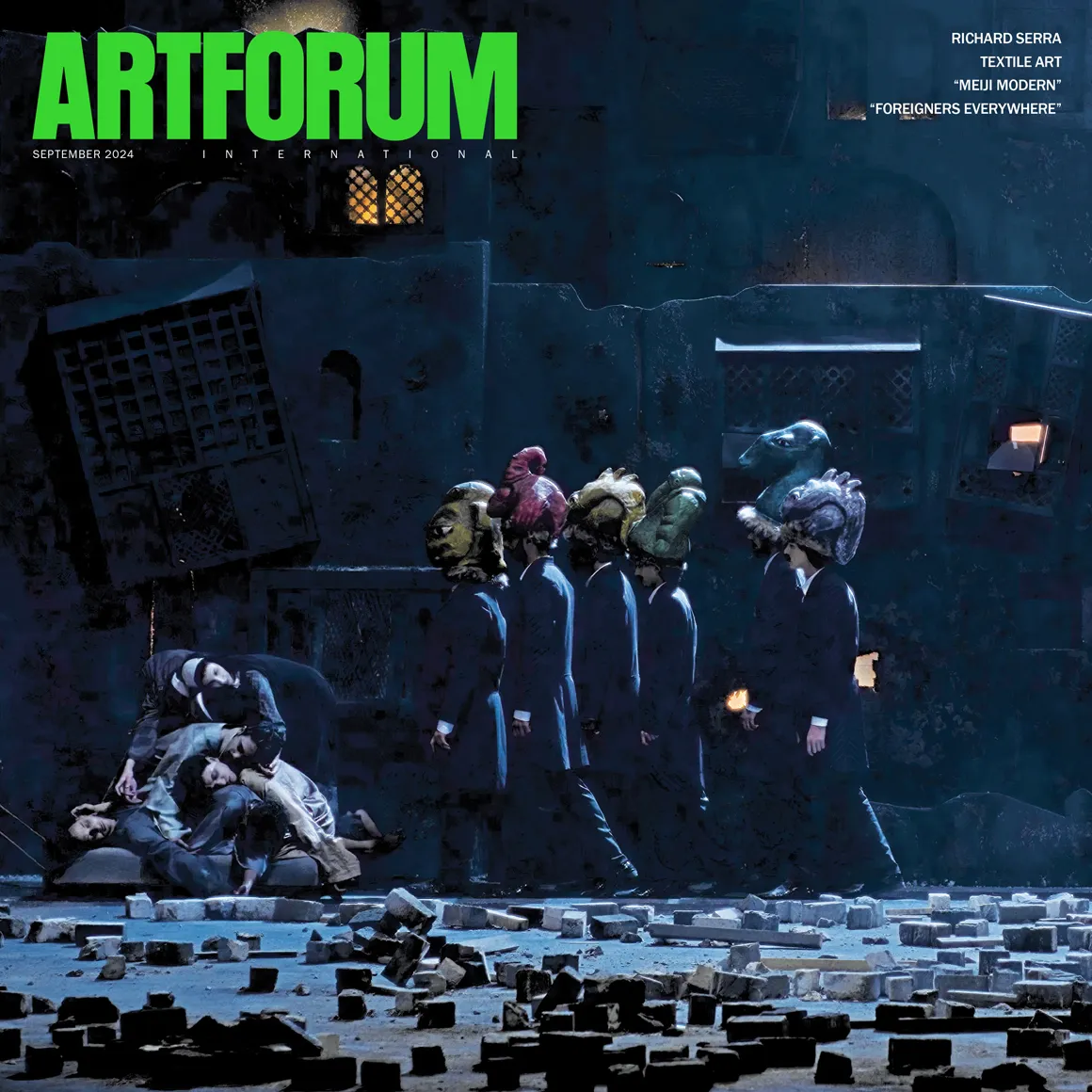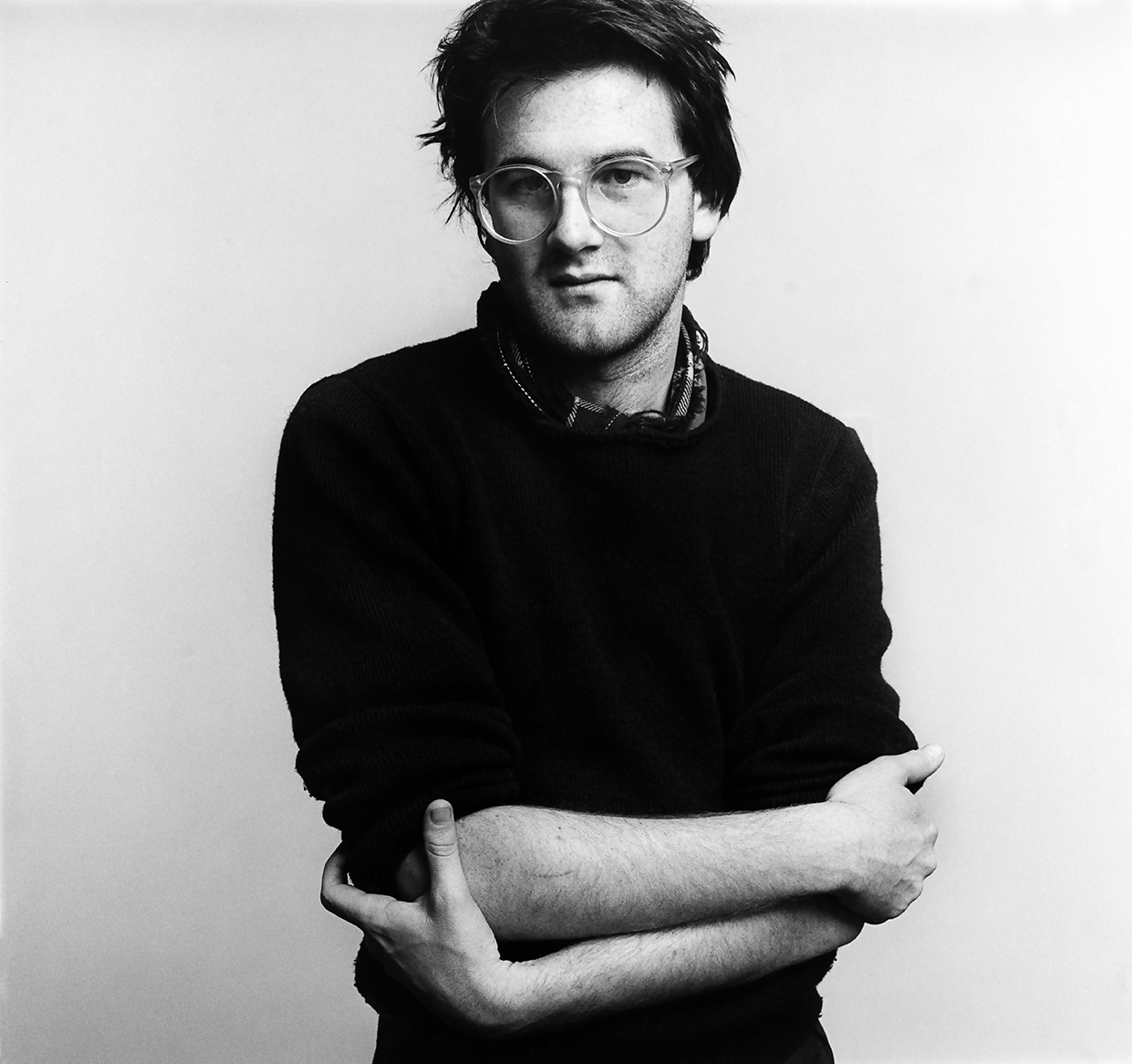When I began reading Artforum—in the early 1980s, on deskcopy at Elam art school—the idea that New Zealand would one day figure in its pages seemed inconceivable. New York was the centre, New Zealand the periphery; New York was Broadway, New Zealand was off-off-off Broadway. In 1992, Julian Dashper would address this in a project in Artforum. Feeling excluded, he bought advertising space to make a page project, where he fantasised, first, being on the magazine’s cover, and, then, in its reviews pages. Later, Dashper would be instrumental in bringing (now-disgraced) Artforum publisher and advertising man Knight Landesman to New Zealand and things started to turn. With this contact and, crucially, with a global turn in the art world, we began to see more New Zealand content, with Anthony Byrt becoming a regular writer. Nevertheless, I was surprised to open the latest issue of the magazine to find New Zealand suddenly permeating it. There’s a double-page spread reproducing Richard Serra’s Te Tuhirangi Contour at Gibbs Farm, and another of Mataahou’s Takapau, Golden Lion winner, kicking off the Venice-response section. There’s a feature on Christoph Büchel by Simon Denny, a review of Dan Arps in Whangarei by Anthony Byrt, and an interview with Vera Mey, co-curator of the Busan Biennale. All this coverage is there as a matter of course, not as the result of any special prompting or pleading. It’s exciting, but also deflating. It’s like discovering the holy grail, only to realise the quest is over. We can no longer aspire to join a club that won’t have us as a member.
•


The Years Have not Been Kind
Ken Downie took this photo of me around 1987. He photographed everyone in his circle in Wellington as if we were worthy of the David Bailey Box of Pin-Ups treatment—as if photographing us like stars might make us stars. It’s weird viewing this image of myself looking so sensitive and thoughtful (when I wasn’t), unlike now (when I am).
•

Thank Christ
Here’s a view of our latest exhibition at the Institute of Modern Art, Duty of Care: Part One. It shows a controversial United Colors of Benneton ad from 1992, reproduced billboard scale. (I’m old, so I remember how edgy the ad was when it first came out.) Here, it’s accompanied by Michael Parekowhai’s 1994 sculpture Acts II on loan from Queensland Art Gallery. Its title refers to the The Acts of the Apostles from the Bible.
Benneton is an Italian knitwear brand. In the 1990s, it courted controversy with its polarising ad campaigns drawing on hot-button political issues. Its art director Oliviero Toscani often made his ads using found press images, never showing the product. By aligning itself with urgent social issues and humanitarian crises, the brand pioneered corporate virtue signalling, but also opened itself up to criticism for exploiting pain and suffering to sell sweaters. Many publications chose not to run the ads. At the time, the Benetton campaigns were widely discussed in the art world; they were part of the art discussion.
This particular ad shows a Christ-like David Kirby dying from AIDS in Ohio. It is a classic care image, showing parents tending to their dying son. The photographer and the family agreed to let Benetton use the image, to raise AIDS awareness. The original photo was in black and white, but has been coloured to give it a nostalgic, Catholic-kitsch feel. The scene recalls images of the deposition, the pieta—Christ with mourners. In a painting in the background, we can see caring Christ-like hands reaching down over the scene.
It’s a reminder of how much Christianity informs Western ideas of care.
•
Who Am I?
I am a contemporary-art curator and writer, and Director of the Institute of Modern Art, Brisbane. I have held curatorial posts at Wellington’s National Art Gallery, New Plymouth’s Govett-Brewster Art Gallery, Dunedin Public Art Gallery, Auckland Art Gallery, and, most recently, City Gallery Wellington, and directed Auckland’s Artspace. My shows include Headlands: Thinking through New Zealand Art for Sydney’s Museum of Contemporary Art (1992); Action Replay: Post-Object Art for Artspace, Govett-Brewster Art Gallery, and Auckland Art Gallery (1998); and Mixed-Up Childhood for Auckland Art Gallery (2005). My City Gallery shows include Yvonne Todd: Creamy Psychology (2014), Julian Dashper & Friends (2015), Francis Upritchard: Jealous Saboteurs (2016), Colin McCahon: On Going Out with the Tide (2017), John Stezaker: Lost World (2017), This Is New Zealand (2018), Iconography of Revolt (2018), Semiconductor: The Technological Sublime (2019), Oracles (2020), Zac Langdon-Pole: Containing Multitudes (2020), and Judy Millar: Action Movie (2021). I curated New Zealand representation for Brisbane’s Asia-Pacific Triennial in 1999, the Sao Paulo Biennale in 2002, and the Venice Biennale in 2003 and 2015. I am co-publisher of the imprint Bouncy Castle.
Contact
BouncyCastleLeonard@gmail.com
+61 452252414
This Website
I made this website to offer easy access to my writings. Texts have been edited and tweaked. Where I’ve found mistakes, I’ve corrected them.
.